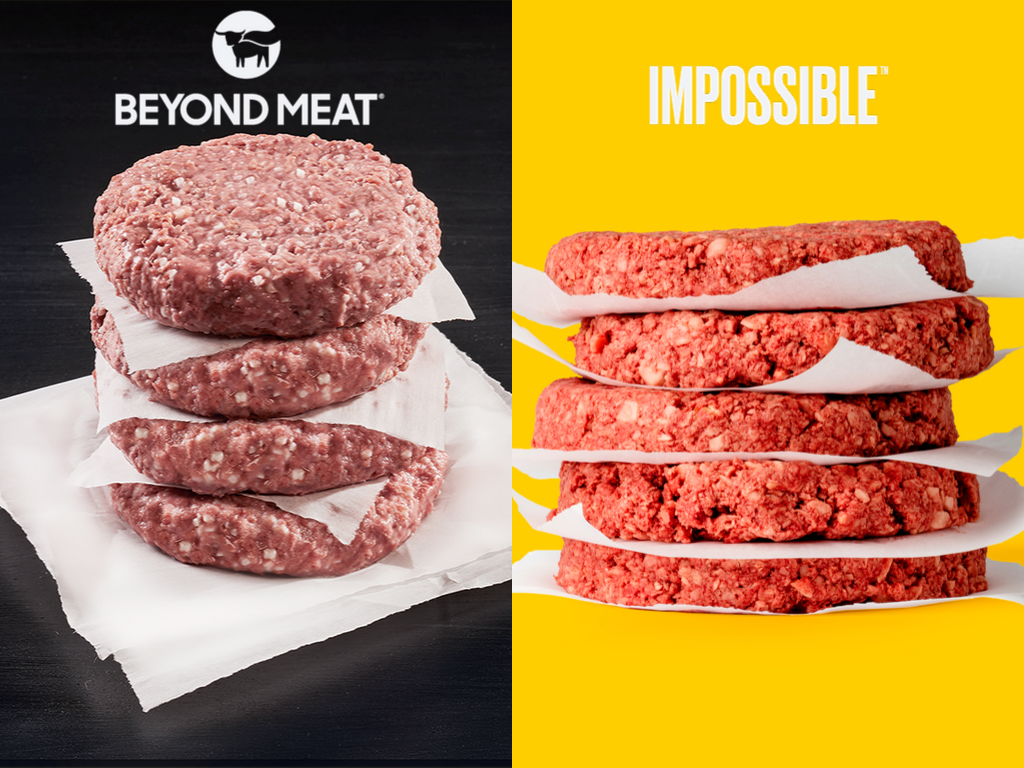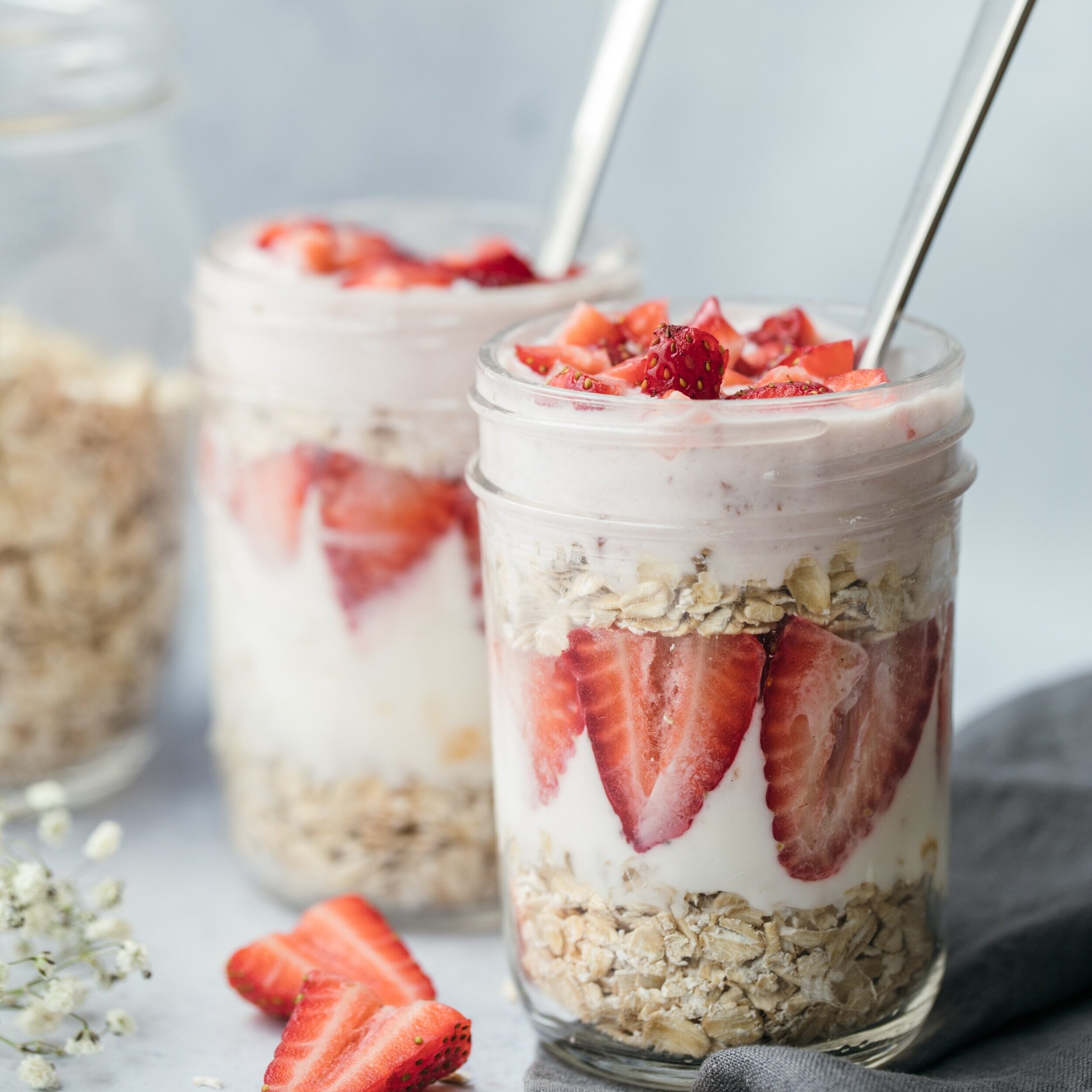Demystifying Plant-Based Proteins: Which Alternatives Are Good For You?
by Jenna Hajny
With so many meat alternatives popping up at fast food chains like McDonald’s, Burger King, and Carl’s Jr., we’re set to see more and more plant-based foods flooding the market in this new decade. However, with the rising popularity and availability of options from brands such as Impossible Foods and Beyond Meat comes questions about which vegetarian proteins actually promote our health. From good old-fashioned tofu to newer players in the plant-based game, this article will explore the most common vegetarian alternatives, from most to least healthy.
Getting To The Root of the Plant-Based Trend
First, it’s important to understand why more individuals and companies are adding plant-based alternatives to the menu. This trend is due to a growing body of research suggesting that frequent consumption of red meat significantly increases one’s risk of developing high blood pressure, diabetes, and cardiovascular disease. [1] In fact, a 2017 study found that daily consumption of a 50g serving of processed meat was associated with a higher risk of cardiovascular events such as heart attack and blood clots. [2] This risk is mainly attributable to the high saturated fat and cholesterol content found in red meat.
In addition to the ill health effects of red meat, its production is a major contributor to global warming. Compared to plant-based agriculture, the livestock industry requires higher quantities of freshwater, land, and generates more waste. The global livestock industry is responsible for nearly 20 percent of total greenhouse gas emissions, which translates to more than 1.4 million tons of carbon dioxide equivalents. [3] Therefore, promoting plant-based alternatives offers a solution to both common health complications and the growing climate crisis.
Differentiating Between Plant-Based Proteins
Tempeh
Amongst the plethora of vegetarian proteins, tempeh tops the list. Tempeh is often regarded as a functional food which means it possesses positive health benefits beyond providing basic sustenance.
Tempeh is made from fermented soybeans that have been soaked, cooked, and then molded into a square or patty shape. It also usually contains nutritious grains and seeds such as quinoa, barley, millet, brown rice, and flax which gives it a distinct earthy texture. One 100 gram serving of tempeh contains 20 grams of protein and 10% of your daily iron and calcium needs. [4] However, what makes tempeh’s nutritional composition stand out among its vegetarian counterparts are benefits derived from its high levels of isoflavone—a soy phytoestrogen—and the fermentation process.
Isoflavones have been found to suppress the development of arteriosclerosis, which is the build-up of fats and cholesterol within artery walls. This condition is extremely dangerous because it increases one’s risk of heart attack, heart disease, and stroke. [5] Isoflavones prevent this condition because they improve metabolic function, aiding the body in the breakdown substances like cholesterol. [6]
Furthermore, a 1967 study determined that fermentation increases soybeans’ fiber and amino acid content. Specifically, the amount of accessible amino acids in tempeh was found to be as much as 8.5 times higher than that in unfermented soybeans. [7] This is important because amino acids play a vital role in building muscle tissue, fighting off illness, and transporting nutrients throughout the body. People with an amino acid deficiency may experience digestive trouble, depression, poor immunity, and lower mental acuity. [8] Tempeh’s high protein and fiber content will keep you feeling full longer than many of the plant-based alternatives to follow.
Tofu
Tofu’s nutritious composition has earned it a spot in second place. This vegetarian protein is made from condensed, unfermented soy milk that’s been processed into Jell-O-like white blocks. One 100 gram serving of tofu contains about 8 grams of protein and is low in both fat and carbohydrates. [9] Similar to tempeh, tofu contains high levels of isoflavones which in addition to promoting vascular health may aid in cancer prevention.
A 2017 animal study discovered that rats with soybeans in their diet possessed greater immunity against cancer. The same results were also noted in a population study comparing Asian and American women. In this case, women of Asian descent, who frequently consume soybean-based products, were found to have rates of breast cancer five times lower than their US counterparts. [10] Another perk of tofu is that soybeans are the only vegetable that contains all eight essential amino acids and double as an excellent source of fiber, iron, calcium, zinc, and B vitamins. [11]
However, it’s important to remember that not all tofu products are created equal. As with most foods, even tofu can become unhealthy with different preparations. Have you ever tried tempura vegetables? While they may be delicious, eating fried broccoli or sweet potatoes negates their nutritional value. The same principle applies to fried tofu, tofu jerky, and tofu dogs, which do not provide the same health benefits as steamed tofu.
Seitan
Seitan is a form of gluten made by combining wheat flour and water which gives it the texture of traditional beef. While this may initially seem innocuous, the pros and cons of seitan must be more carefully examined.
Just one 2.5 ounce serving of seitan contains around 22 grams of protein and 20% of the recommended daily serving of iron. [12] Additionally, seitan has low levels of carbohydrates and contains no saturated fats which may help reduce cholesterol levels. [13]
However, seitan is a processed food. As a result, it commonly contains additives and fillers which are used to enhance the product’s structure and flavor. [14] Furthermore, due to seitan’s main ingredient–wheatt–people should be more cautious with its consumption. While wheat is normally something only those with a gluten-sensitivity need to avoid, a growing body of research suggests that wheat increases the permeability of our intestines. This phenomenon known as leaky gut syndrome can cause bloating, gassiness, fatigue, and poor-looking skin. [15] While this list of potential symptoms may be alarming, seitan’s high protein and iron content makes it a valuable source of nutrients for vegetarians. To err on the side of caution, you may want to avoid consuming seitan in excessive amounts.
Rounding Out The Bottom: Beyond Meat & Impossible Foods
While the term “plant-based” sounds appealing, not all vegetarian proteins are created equal. Meat substitutes from popular companies Beyond Meat and Impossible Foods are processed and contain additives. But if you are craving a juicy burger, a plant-based patty is still a better choice than red meat. However, what’s the difference between a Beyond Burger and an Impossible Burger?
Beyond Meat is made from a combination of peas, mung beans, rice proteins, and canola oil. One burger contains 20 grams of protein and 30% of the recommended daily intake for saturated fat. [16] However, saturated fat should not be consumed with a heavy hand. It can increase bad LDL cholesterol, which leads to arterial blockages within the heart and throughout the rest of the body. [17] Despite this drawback, Beyond Meat’s key ingredient, pea protein isolate, is easily digestible for the majority of people and it is also an allergen-friendly option since it’s made without soy or gluten.
Meanwhile, Impossible Meat is made from a mixture of soy, potato protein, yeast extract, and sunflower oil. One burger contains 19 grams of protein and 40% of the recommended daily intake for saturated fat, which is slightly higher than its Beyond Meat counterpart. [18] While Impossible Burgers lack whole food ingredients and are processed with genetically modified organisms, they do have a strong micronutrient content. Their burgers contain B12 and zinc which are both important vitamins found in meat products. [19]
One feature both burgers share is their high sodium content. Sodium is used to prolong preservation and enhance the product’s flavor, but excessive sodium consumption has been linked to an increased risk of heart disease and stroke. [20] However, it is important to realize that regular meat patties can also contain a significant amount of sodium when seasoned.
While these burgers may not necessarily produce a clean bill of health, they are positively contributing to conversations about sustainability. Based on statistics provided by Beyond Meat and Impossible Foods, these vegan patties use 93 percent less water, 95 percent less land, and 90 percent less fossil fuel emissions than a quarter pound of regular ground beef. [21] This data is significant because it suggests the production of plant-based meat is much more environmentally friendly than that of red meat.
Bottom Line: When In Doubt, Stick To Whole Foods
While tempeh, tofu, and seitan are generally nutritious vegetarian alternatives, it is important to remember that unexpected additives can be hidden in these foods. When dining out and unable to read a product’s packaging it is often times safer to opt for whole foods, which are simply plant foods that are unprocessed and unrefined. Whole foods with a high protein content include lentils, chickpeas, hemp seeds, organic pastured eggs, organic pastured cottage cheese, nuts, seeds, and quinoa. Ultimately, increasing the quantity of plant-based foods in your diet not only reduces your risk of heart disease, obesity, diabetes, and cancer, but also is an excellent way to combat climate change. [22]
References
“How to Reduce Your Risk of Diabetes: Cut Back on Meat.” health.clevelandclinic.org. (2017).
“A Contemporary Review of the Relationship between Red Meat Consumption and Cardiovascular Risk.” International Journal of Preventive Medicine. (2017).
“Reducing the Environmental Impact of Dietary Choice: Perspectives from a Behavioural and Social Change Approach.” Journal of Environmental and Public Health. (2012).
“What’s the Difference Between Tempeh and Tofu, Anyways?” wellandgood.com. (2018).
“Analysis of isoflavone content in tempeh, a fermented soybean, and preparation of a new isoflavone-enriched tempeh.” Journal of Bioscience and Bioengineering. (2005).
“Antioxidants isolated from Fermented Soybeans (Tempeh).” Nature. (1964).
“Studies on the Nutritional Value of Tempeh.” Journal of Food Science. (1967).
“Functional Amino Acids in Growth, Reproduction, and Health.” Advances in Nutrition. (2010).
“What’s the Difference Between Tempeh and Tofu, Anyways?” wellandgood.com. (2018).
“Scientists Untangle the Soy-Breast Cancer Paradox.” Clinical Cancer Research Journal. (2017).
“Soy Protein.” Journal of Perinatal Education. (2003).
“Seitan is the Devilishly Healthy Vegetarian Meat Alternative We’re all Sleeping On.” wellandgood.com. (2019).
“Top 5 Lifestyle Changes to Improve Your Cholesterol.” mayoclinic.org. (2018).
“Organoleptic Evaluation of Poultry Meat Products with Wheat Protein – Seitan, Coloured by Microbial Natural Pigment.” Assam University Journal of Science & Technology. (2010).
“The Dietary Intake of Wheat and other Cereal Grains and Their Role in Inflammation.” Nutrients. (2013).
“Beyond Meat, Impossible Foods and the plant-based burger of the summer. Here are the diet facts you need to know.” cnbc.com. (2019).
“The truth about fats: the good, the bad, and the in-between.” health.harvard.edu. (2018).
“Beyond Meat, Impossible Foods and the plant-based burger of the summer. Here are the diet facts you need to know.” cnbc.com. (2019).
“Impossible and Beyond: How healthy are these meatless burgers?” health.harvard.edu. (2019).
“Great-Tasting Veggie Burgers are Here, But Are They Any Healthier?” mensjournal.com. (2019).
“Is Fake Meat Better for You, or the Environment?” nbcnews.com. (2019).
“What is a plant-based diet and why should you try it?” health.harvard.edu. (2018).

![Veggies [UCLA Total Wellness]](https://images.squarespace-cdn.com/content/v1/56a19dc589a60afe613cef70/1578332875148-FAE30YC9VRTUATW8JRTE/Veggies+%5BUCLA+Total+Wellness%5D)
![Tempeh [UCLA Total Wellness]](https://images.squarespace-cdn.com/content/v1/56a19dc589a60afe613cef70/1578332926706-S213Q1QXVKG1YVE7KEEH/Tempeh+%5BUCLA+Total+Wellness%5D)
![Tofu [UCLA Total Wellness]](https://images.squarespace-cdn.com/content/v1/56a19dc589a60afe613cef70/1578333021251-1LZNMVJGNJ4064PGZGRN/Tofu+%5BUCLA+Total+Wellness%5D)







